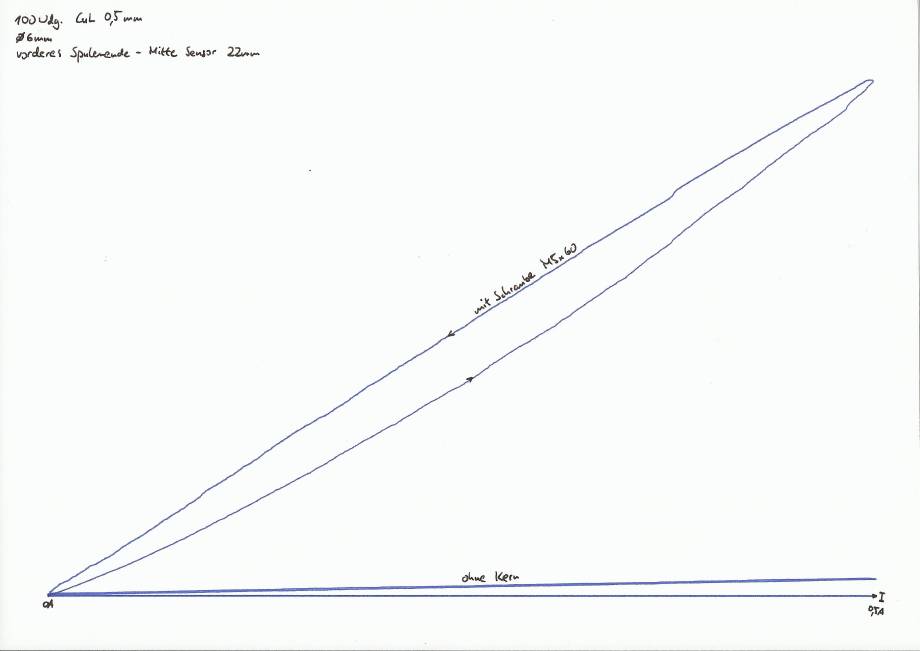Quick and Dirty B–H Plots
While building solenoids, I needed a way to quickly judge the magnetic properties of some unknown steel. A simple analogue hall sensor IC works together with a controlled current source for the coil to drive a XY plotter (or oscilloscope in XY mode) and create simple B–H plots.




Linearity is ensured by the following setup procedure for a given maximum current (i.e. magnetic field):
- Wire up a coil (without core at first) to the current sink. The latter can be controlled with a slow slope from a function generator or a potentiometer. The control input is also connected to the plotter’s X input.
- Place the sensor far enough away so the resulting plot is linear. Scale the plotter appropriately so the line covers the full scale.
- Add the core to be examined to the air coil. The sensor now has to be moved further away, until the maximum flux density is equal or less than with the air coil. Otherwise, the sensor wouldn’t be linear any more.
- With the sensor and coil positions fixed, e.g. coils with and without core can be compared and the relative permeability calculated.
